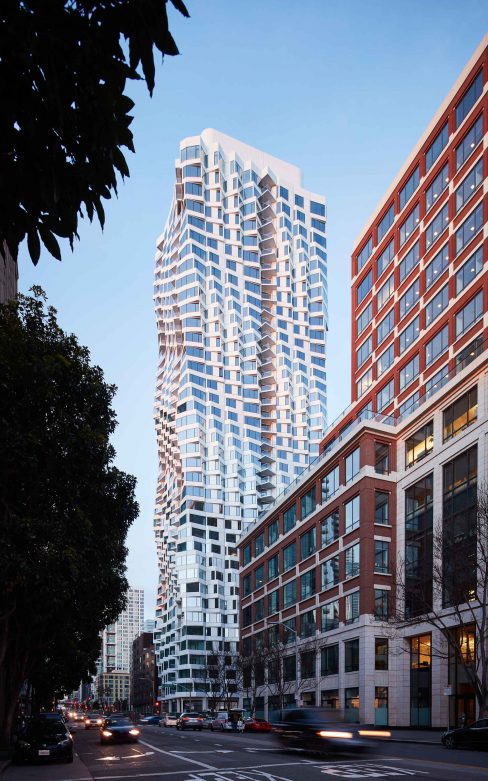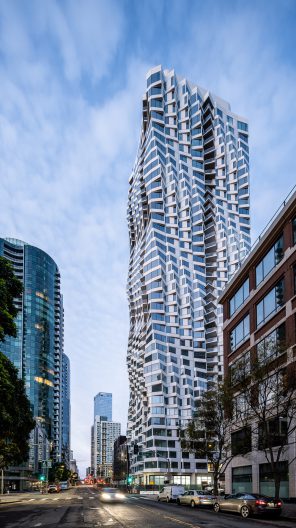San Francisco Chronicle — "Billowing New Tower Spruces Up S.F. Skyline"
“Even with today’s grim need for social isolation, San Francisco’s most eye-catching residential tower wants to pull you close. From the Bay Bridge or the Embarcadero, the 39-story Mira at the corner of Folsom and Spear streets is a flowing stack of tightly wound white metal bays, frozen in motion. Fragmentary glimpses from nearby blocks defy expectations, whipsawed slivers amid the stodgy norm.
Finally, there’s the view straight up from the sidewalk – a crisp commotion of stacked angles, precisely arranged but seemingly ready to fly out in a dozen directions at once.
Though Mira has been in the works since 2014, the architectural show still feels fresh as the first residents begin to unpack. But this 392-unit residential complex was also conceived as a celebration of triumphant urbanism – a far cry from the mood of this troubled summer. . . .
The architect is Jeanne Gang, who rose to prominence a decade ago for her 82-story Aqua, a statuesque slab in Chicago that was the tallest building in the world designed by a woman. Since her firm Studio Gang has made its mark both on skylines – an even taller Chicago high-rise is nearing completion – and in socially rooted projects such as libraries and community centers. . . .
Gang sees a wider role for Mira as well. While the market rate units start at $1.2 million and climb much higher, a heartening 40% of the condominiums are reserved for buyers who make between 80% and 120% of the median income in San Francisco, Marin and San Mateo counties. . . .
‘Mira reflects the goals of San Francisco to have this mix of dwellings,’ Gang said last week. ‘It’s good to be part of an area that was really conceived as a district.’ . . .
Gang conceived of ‘migratory bays.’ Each floor is chiseled in a way that allows for no less than 30 bays of varying depth. The pattern rotates slightly from floor to floor, making a full revolution every 10 floors. . . . That underlying interest in structural substance, materiality and craft, sets Studio Gang apart from firms where actual buildings seem less important than their hyper-charged renderings.”




